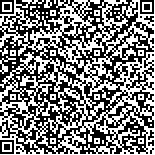下载中心
优秀审稿专家
优秀论文
相关链接
摘要

为了提高基于遥感数据的湖泊围网养殖区提取精度,提出了基于对应分析的湖泊围网养殖区的提取方法,并以ETM+卫星遥感数据为基础,将其应用于漏湖围网养殖区的提取.研究结果表明:(1)基于对应分析的方法具有较高的提取精度,围网养殖区的提取精度达到了95.59%,总体精度为91.14%,Kappa指数为0.86;(2)提取结果表明,2001年漏湖围网养殖区面积为111.76km2,占湖泊总面积的76.29%.实验表明,基于对应分析的方法是遥感影像湖泊围网养殖区提取的一种新的有效方法.
Lakes have been facing a number of disadvantageous eco-environmental issues due to the aggravation of human activities and the global clmi ate change. So, lake dynamic monitoring becomesmore and more mi portant. The extraction of lake enclosure culture area as an mi portant content for lake dynamic monitoring has been highly valued.However, few researches on extracting lake enclosure culture area have been conducted, and little attention hasbeen paid to the extractionmethod, and the extraction precisions using existed methodswere unfavorable. In order to mi prove the extraction precision of lake enclosure culture area, a new method using correspondence analysis (CA) to extract lake enclosure culture area is proposed in this paper. The CA method relies on squared deviations between pixel values and their expected values (jointprobabilities), and itexplores the relationship between notonly the mi age bands butalso the pixels. AlthoughCA has routinely been an accepted technique among ecologists and statisticians, its application to remote sensing is still relatively new. It is the goalof this study to detailCAmethodology as ameans ofachieving highly accurate and efficient lake enclosure culture extraction.Themethodology mainly includes foursteps as follows: Firstly,the data ispreprocessing. Secondly,the preprocessed data is transformed using the CA algorithm.Thirdly, the texture analysis is applied to the CA first component. Finally,the enclosure culture area is extracted by decision tree according to themostsuperexcellent threshold value.In this study,theGehu lake is selected as a case to validate thismethod based on themulti-spectraldata ofLandsat-7 ETM+ acquired on July 26,2001,which is obtained in a standardized orthorectified Geo TIFF formatdownloaded from internet.TheGehu Lake (31°29′—31°42′N,119°44′—119°53′E) is located in themiddle and lower reaches of theYangtzeRiver, which is the second largest lake inTaihu basin,and itswater area is 146.0 km2. It is one of the earliest lakeswhich utilized the enclosure culture to cultivate freshwater fish or shellfish. And the classification results are evaluated using the precision analysis function in ENVI4.2.The results are as follows:(1) the extraction accuracy of enclosure culture area is 95. 59%, overall accuracy is 91.14%, with overallKappa value of0.86; and (2) the area ofGehu lake enclosure culture is111.76km2, 76.29% of totalGehu lake area. Then the results are comparedwith thosewith the other threemethods, namely, themethod based on principal component analysis (PCA), themethod combining the PCA first two componentswith band 4 and themethod based on originalbandswithoutCA orPCA analysis. And the results of the comparison test showed that: (1) the overall accuracies for the three methods above mentioned are 82. 17%、89. 17% and 83. 54% respectively;and (2) the classification accuracies are obvious less than thatbased on CA transformation.To sum up, the CA is proved to be a new powerfulmultivariate analysis technique for extracting enclosure culture area. But there is still some commission and omission phenomenon, such as the higher commission phenomenon in the classification of lake enclosure culture area with the commission error of 13. 41%, as well as the higher omission phenomenon in the classification of the other categorywith omission of21.43%. So it isnecessary to mi prove themethod\nto reduce the commission and omission error. And the further research should be done to testtheCAmethod on other lakes for extraction of enclosure culture, and should also be focus on whether it can be suitable for application to high spatial resolution mi agery, such as SPOT, IKONOS and QUICKBIRD.

